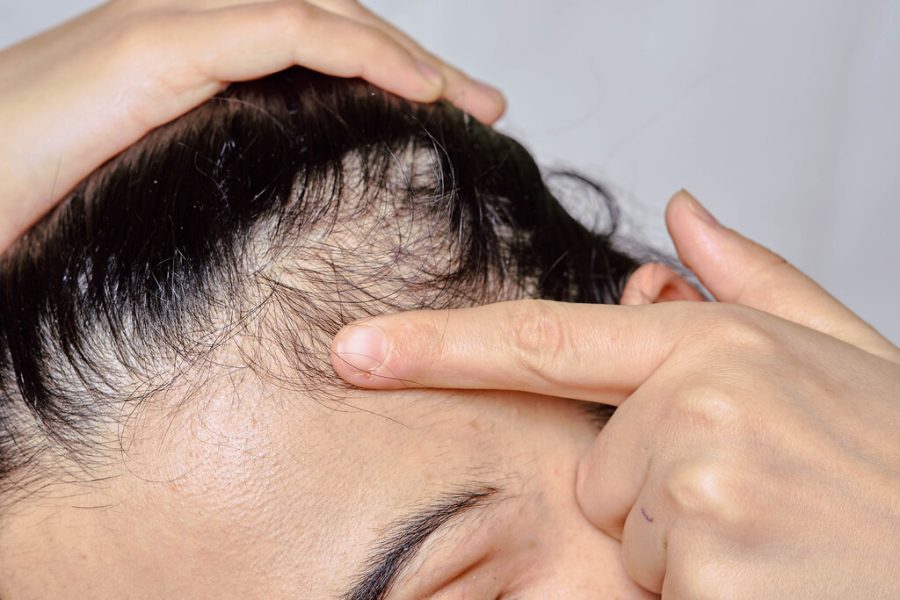After the fall, many people find that their hair falls out more, what’s going on? Is there a season for hair loss? What is the real meaning of hair loss, how much hair fall every day is still within the normal range? Today, dermatologists teach you how to “head anxiety”.
Hair loss in the fall is somewhat justified
In terms of the number of hair loss patients seen in daily dermatology clinics, there is no particularly clear seasonal pattern to hair loss.
However, a study of scalp follicles in a healthy population showed that the proportion of resting hairs in a healthy population reaches a small peak throughout the year in July. This portion of hairs at rest will fall out at the end of the resting phase (2-3 months later), which, on a time projection, coincides with the fall.
So, increased hair loss in the fall in some people may be a normal physiological phenomenon.
100 hair loss per day is nothing
Hair loss is the process and symptom of hair shedding. There is a normal cycle of scalp hair follicles, including the growth phase (2-8 years), the regression phase (2-8 weeks), the resting phase (2-3 months) and the shedding phase. Therefore, some degree of hair loss is a normal physiological process.
The hair loss we are concerned with on a daily basis usually refers to abnormal hair loss. There are different types of abnormal hair loss, such as patchy baldness, androgenetic alopecia or resting hair loss.
Is 100 hair loss per day considered a lot? According to the Hair Loss Clinical Grading Scale, the amount of hair loss is categorized into 6 grades, with 10 hairs/day for grade 1, 50 hairs/day for grade 2, 100 hairs/day for grade 3, 200 hairs/day for grade 4, 400 hairs/day for grade 5, and 750 hairs/day for grade 6. Hair loss in grades 1-3 is a normal level, and if it reaches grade 4 or above, or even grade 5 or 6, then this is considered to to be excessive hair loss.
Therefore, an average daily hair loss of 100 hairs or less is normal, and there is no need to worry too much. If the average daily hair loss exceeds 200 hairs, it is necessary to pay attention to the possibility of excessive hair loss.
That’s the main cause of hair loss
Different types of hair loss have different causes, with androgenetic alopecia being the most prevalent.
Androgenetic alopecia is characterized by a slowly progressive pattern of alopecia, with men experiencing frontotemporal and vertex alopecia, and women experiencing significant thinning of hair near the midline of the head. The etiology of androgenetic alopecia is multifaceted, and current research suggests that genetic factors and androgens play a decisive role in its development. Perifollicular inflammation, increased life stress, tension, anxiety, poor living and eating habits and other factors can aggravate the symptoms of androgenetic alopecia.
Resting Hair Loss Mainly characterized by an acute or chronic increase in hair loss. More factors are affected, including physiological factors, fever, stress, drugs, endocrine, organ dysfunction, hair cycle disorders, nutrition and local factors.
COVID-19 infection is also an important trigger for resting hair loss, and the causes may be hypoxia, inflammation, metabolic abnormalities and drugs. Hair loss after new crown usually occurs 1-2 months after the infection. Hair loss usually lasts for 2-3 months and is usually self-limiting, and hair growth will resume after the causative factor is eliminated, and if the amount of hair loss is relatively large, it will take about half a year to a year to restore the appearance.
Avoiding Triggers and Preventing Hair Loss
What should I do if I have hair loss? Among healthy people, there is no recommended method for hair loss from a medical point of view, and it is more important to try to avoid the triggers of hair loss.
Normal work and rest, good living and dietary habits, and relief of emotional stress are helpful in preventing hair loss.
If abnormal hair loss occurs, you should consult a doctor in time, and after a comprehensive assessment by the doctor, you can formulate a reasonable treatment plan in a targeted manner, such as: removing the triggers, waiting for self-healing, and further applying topical medications, local or systemic treatments, etc., under the guidance of the doctor.


